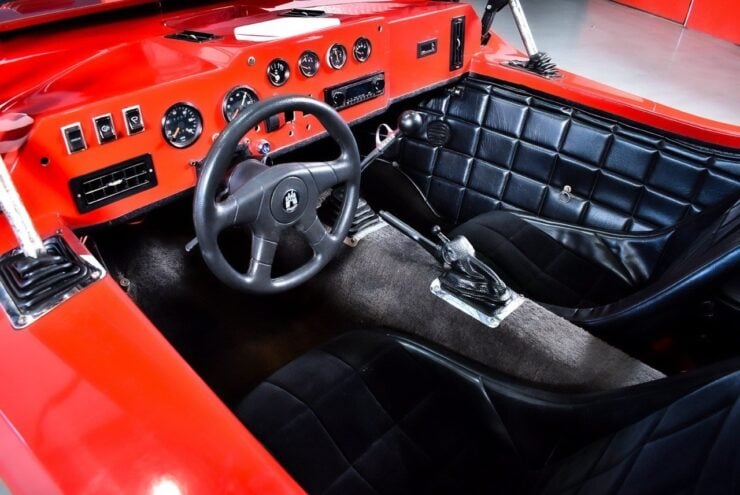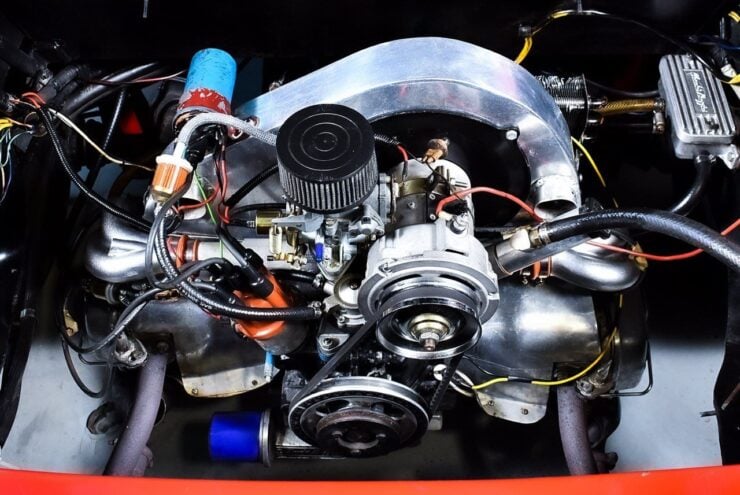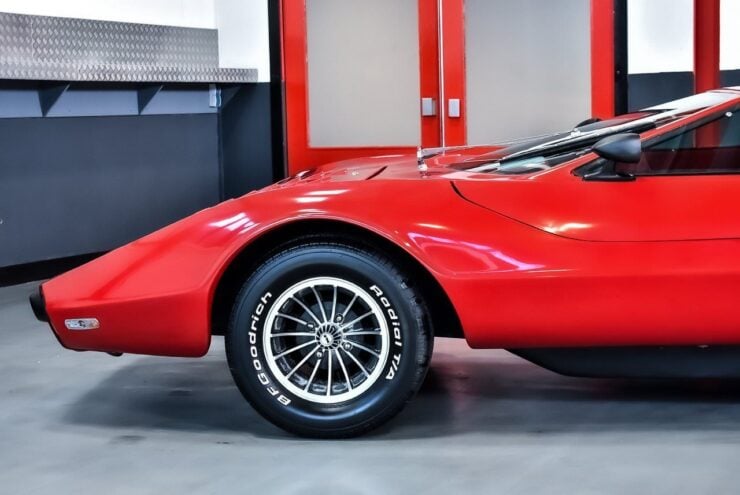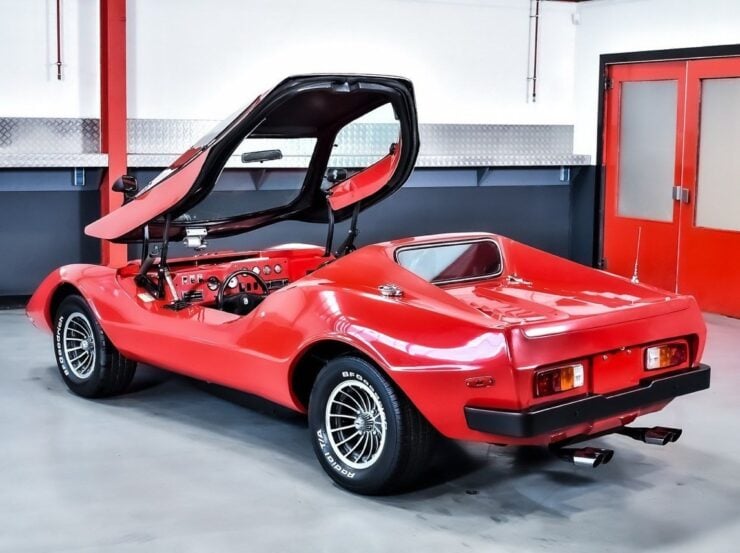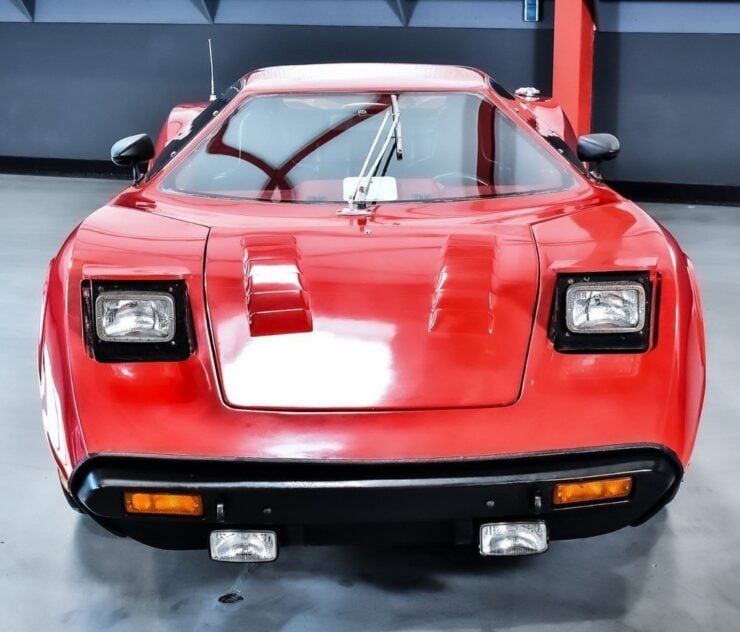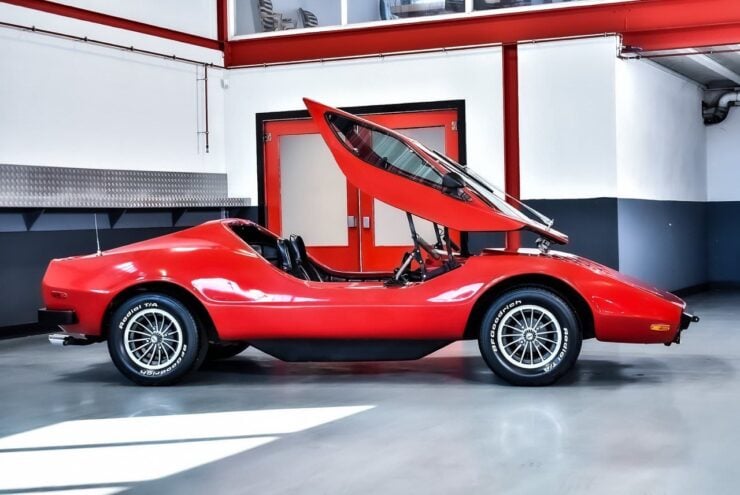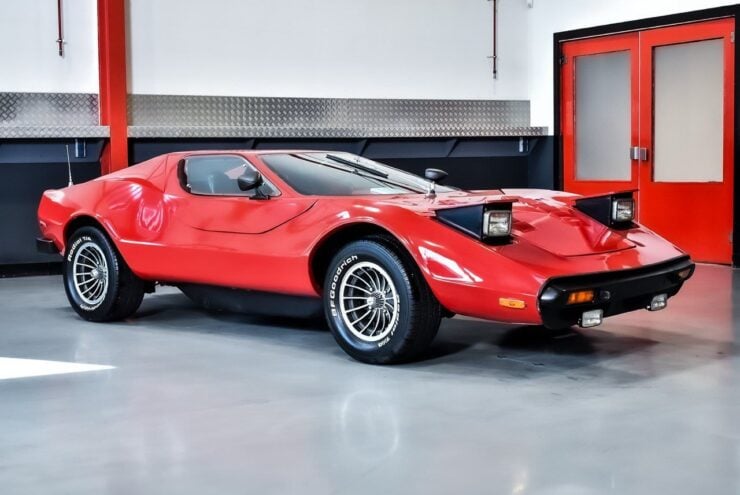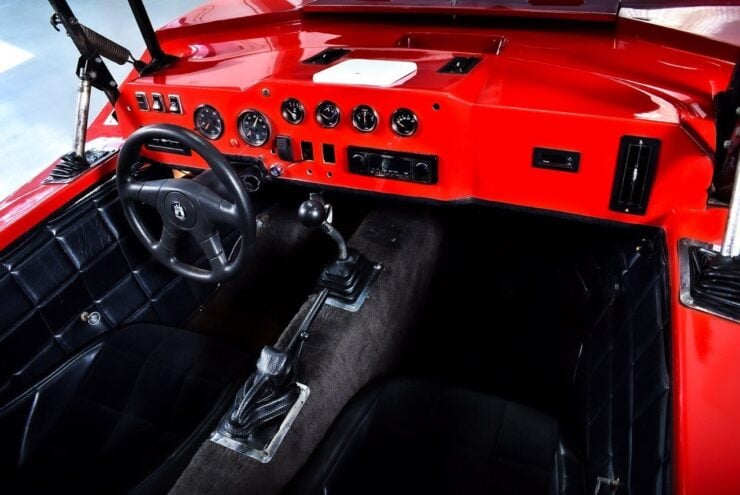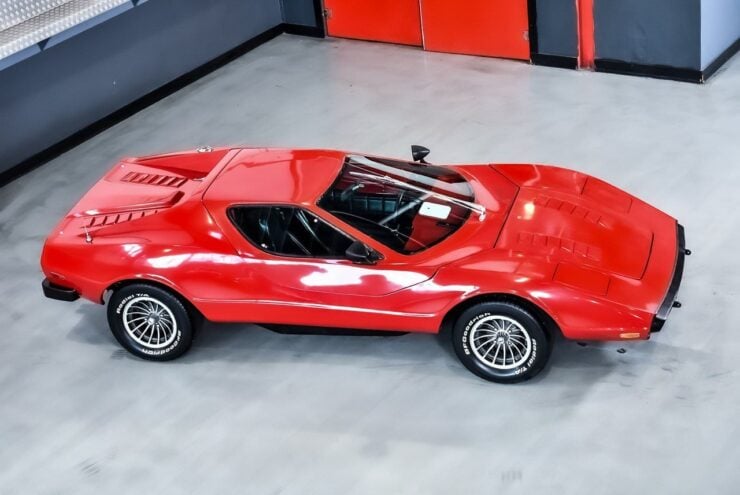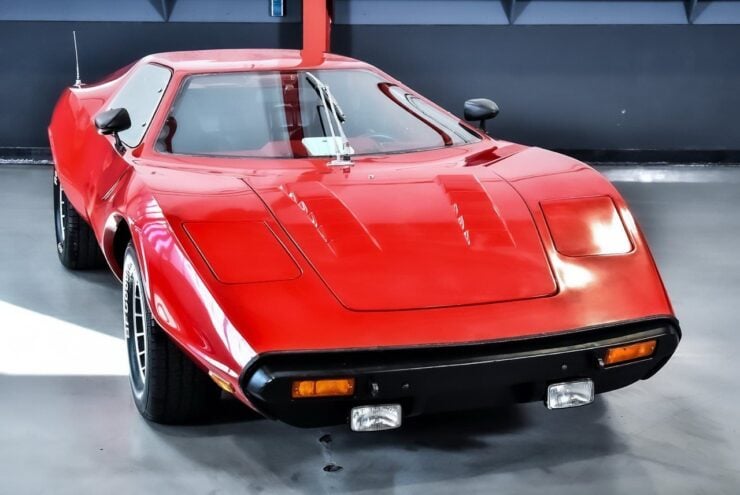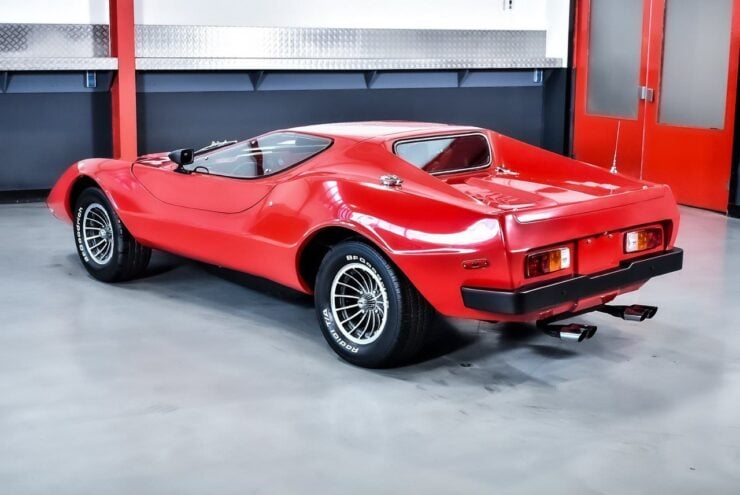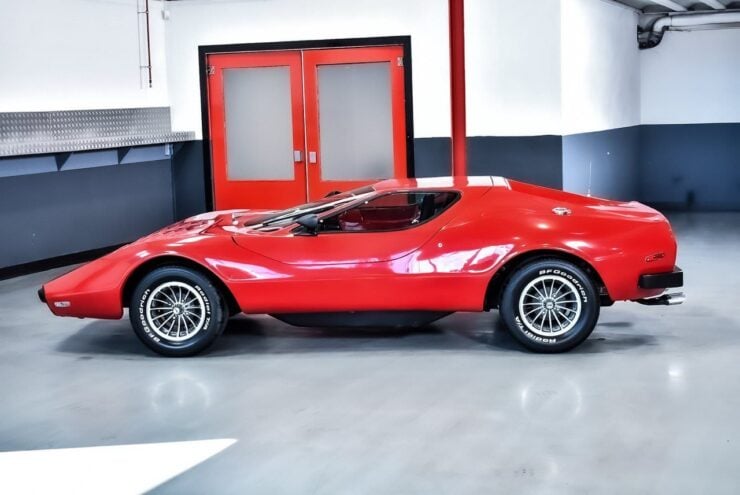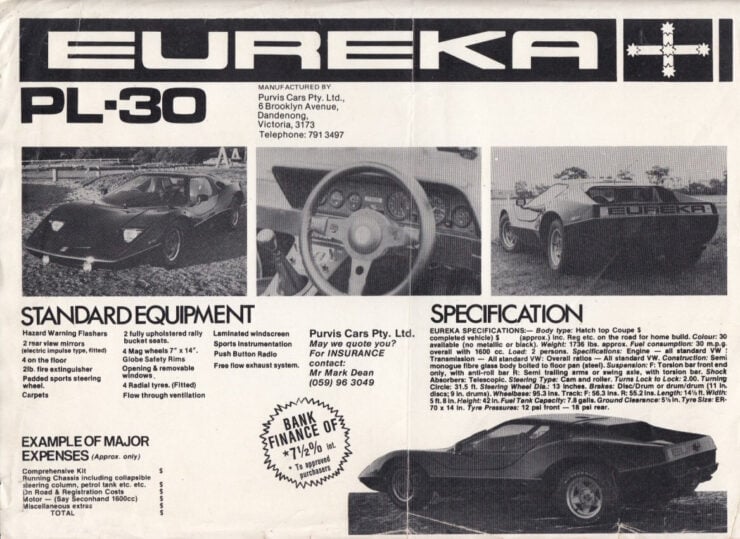This is a 1980 Sterling Sebring, one of the best-known kit cars thanks to its wild supercar-like looks, its relatively low build cost, and that distinctive canopy roof that opens to allow access to the interior.
The Sterling was based on a VW Beetle chassis, and as a result performance wasn’t quite up to what the styling of the car suggested. That said, some owners performed Porsche 911, Subaru, or even V8 engine swaps to vastly improve performance – a small number of cars were even given much stiffer spaceframe chassis.
Fast Facts: The Sterling Sebring
- The Sterling Sebring was the US-market version of the British Nova kit car, developed by Richard Oakes and Phil Sayers in 1971. Built on a VW Beetle chassis, it had a low wedge-shaped fiberglass body and a distinctive single-piece lifting canopy roof to access the interior. While performance from the stock VW engine was modest to say the least, some owners performed engine swaps with Porsche, Subaru, and V8 motors.
- Jerry D. Wills brought the Nova to America in 1973, renaming it Sterling due to Chevrolet’s Nova trademark. US kits were built in California and adapted for DOT compliance, sometimes with revised lighting and bumpers. The kit car’s adaptability led to wildly varied performance, from basic commuter levels to near exotic-car acceleration depending on the drivetrain used.
- The Nova/Sterling was licensed or copied internationally, becoming the Purvis Eureka in Australia, the Purvis Nova in South Africa, and appearing in other markets with local variations. While never reaching Meyers Manx-like sales numbers, it gained a cult following thanks to its concept car styling, canopy entry, and magazine coverage in outlets like Car & Driver and Hot Rod.
- The Sebring variant, built by Custom Coach Builders in the mid-1970s, improved headroom, added integrated bumpers, a flatter hood, and pop-up headlights for regulation compliance and a more production-like look. The 1980 Sterling Sebring shown here is finished in red with turbine alloys, it runs a VW flat-four and 4-speed manual, and is offered in the Netherlands with US and Dutch paperwork.
History Speedrun: The Sterling
The Sterling was the American market version of the Nova kit car, which had emerged in Britain at the height of the 1970s kit car boom. This was a time when people who were seeking exotic styling but who couldn’t afford a factory-built supercar had a handful of options – mostly based on the chassis and running gear of affordable mass-production cars.
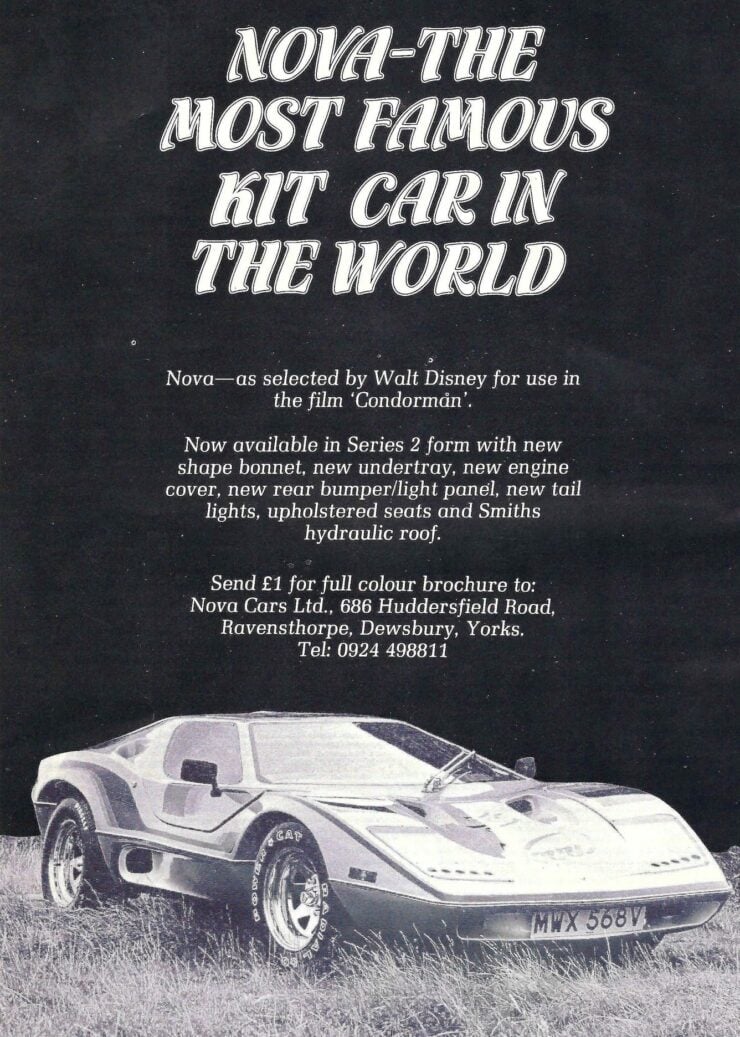

The development of the Nova was carried out by Automotive Design and Development Ltd (ADD), a small British firm founded by Richard Oakes and Phil Sayers in 1971. Oakes, a young designer with a flair for dramatic lines, created a low, wedge-shaped body with flowing curves and a canopy-style roof that lifted in one piece to allow entry for both driver and passenger.
This dramatic canopy, operated via automatic gas struts, eliminated the need for conventional doors and became the Nova’s single most recognizable feature. The Nova was designed to fit onto a Volkswagen Beetle chassis, a common approach in the kit car world thanks to the Beetle’s simplicity, rear-mounted flat-four engine, and availability of new and used donor cars for next to nothing.
The VW’s floorpan and running gear kept costs down, while the lightweight fiberglass Nova body gave it a striking silhouette – a silhouette somewhat reminiscent of period concept cars from the drawing boards of Guigiaro and Gandini. The Nova debuted in 1971 and was sold in the UK by ADD until 1975.
Early kits were well-finished, and the styling stood it well apart from many of the low quality home-built specials of the era – which often looked derivative or were outright copies of real supercars.
Reviews noted that while performance was limited by the standard VW engine, the Nova’s low curb weight allowed for surprisingly nimble handling so long as the builder has dialed in the suspension correctly.
The design was highly adaptable, kit builders could swap in larger or more powerful air-cooled or water-cooled engines if they desired which could vastly improve performance – some well-heeled British builders even went so far as to fit Porsche flat-sixes to give the car performance that better resembled its looks.
Its futuristic canopy drew comparisons to show cars like the Alfa Romeo Carabo and Lancia Stratos Zero, though the Nova’s form was more practical for road use.
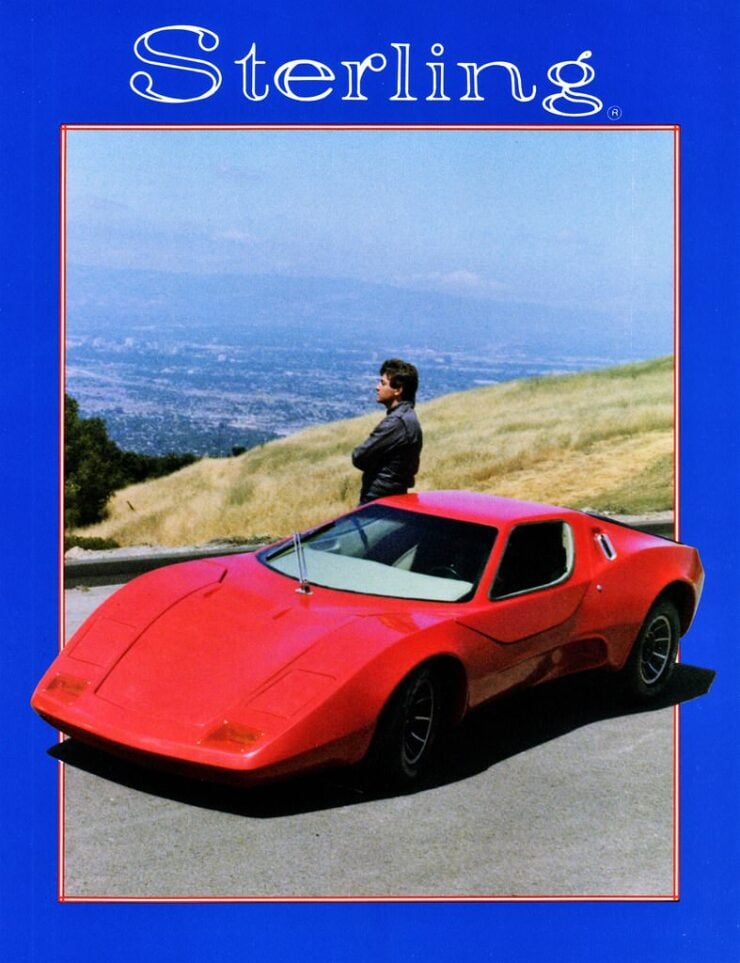


By the time ADD ceased operations in 1975, the Nova had established itself as one of the most visually distinctive kit cars of its generation, and perhaps most importantly it wasn’t a replica, it was an entirely unique design.
The Sterling Makes Its Debut
The Nova was always going to hold a great deal of appeal to the market across the Atlantic in the United States, where Beetles were a common sight on the road, and could be bought so cheaply the model became a popular choice with high schoolers and college students.
It wasn’t long until Californian businessman Jerry D. Wills acquired the rights to produce the car for the North American market – but there was one immediate challenge – Chevrolet already held the “Nova” trademark for its compact mass-production sedan, so the name was changed to “Sterling” for US sales – perhaps a reference to the world-famous currency of its home country – the British Pound Sterling.
Production of the Sterling began in late 1973, with kits manufactured in California. The US version retained the VW Beetle chassis base but often had revised details like different headlight arrangements or larger bumpers to comply with American 5 mph impact regulations.
The Sterling was marketed as a “supercar you can build yourself,” appealing to the growing kit car culture in the States, particularly on the West Coast. The sheer scale of the American market allowed for a broader range of mechanical experimentation. Some Sterling builders installed Porsche flat-sixes, others opted for Corvair flat-sixes, or even full V8 conversions using custom transaxles.
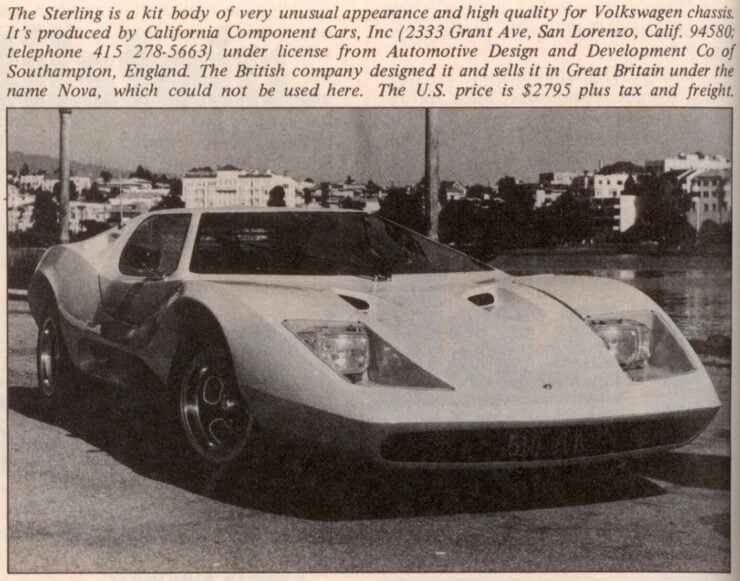


While the VW Type 1 (Beetle) engine remained the most common choice due to its low cost, the kit’s flexibility meant straight-line performance could range from modest commuter levels to near exotic-car territory.
The Global Market
The Nova’s design proved so appealing that it was licensed or copied in multiple countries. In Australia, it was sold as the Purvis Eureka by Tony Fox starting in 1974, with local production lasting well into the 1990s. South Africa also saw its own production under the name Purvis Nova. Variations appeared in Austria, New Zealand, and elsewhere, often with minor design changes to suit local tastes and/or road regulations.
These global iterations of the Nova often developed their own followings. The Australian Eureka became a familiar sight at car shows and on the streets, often equipped with high-performance VW, Subaru, or even Mazda rotary powerplants.
The Nova/Sterling never achieved the sales volume of mainstream kit cars like the Meyers Manx dune buggy, but its supercar-like design and street presence earned it significant attention in magazines and at car shows. It was featured in period issues of Car & Driver and Hot Rod, which helped bring in a whole new group of enthusiasts.
The Beginning Of The End
Owners and builders formed clubs and online communities to share tips, parts sources, and restoration stories. Websites like the Sterling Kit Car Owners Association archive original brochures, technical manuals, and period road tests, keeping the history alive and providing crucial support for owners who need parts or advice.
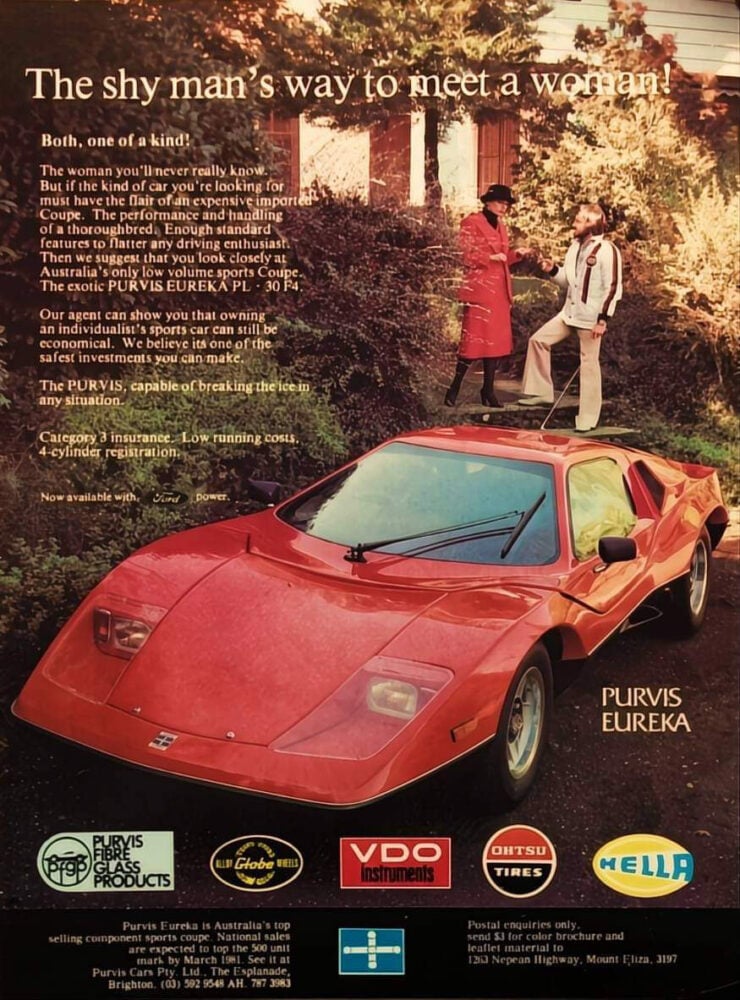


By the late 1980s, changing automotive tastes, an abundance of affordable sports cars, as well as tighter safety and emissions regulations made it increasingly difficult for small manufacturers to operate. US Sterling production slowed and eventually stopped, while UK Nova production had already ended in 1990 under Nova Cars Ltd, the company that had succeeded ADD.
Many surviving examples have become project cars, though the full fiberglass body is impervious to rust, so many examples can be saved with a new rolling Beetle chassis and some TLC. The Sterling might not have had the performance of a true supercar, but when it drove down the street it turned heads just as quickly as a Lamborghini or a Ferrari.
The 1980 Sterling Sebring Shown Here
The Sterling Sebring was a modified version of the standard Sterling kit car, created to address some of the original model’s practicality and styling limitations. Built by Custom Coach Builders in the mid-1970s, the Sebring retained the VW Beetle chassis and the iconic single-piece lifting canopy, but had a slightly taller roofline to improve headroom and make the cockpit more comfortable for taller drivers.
It also incorporated integrated fiberglass bumpers, a flatter hood, and factory pop-up headlights – changes aimed at meeting US DOT headlight height regulations and giving the car a more production-like appearance.
The example you see in this article is finished in red over a black vinyl interior. It has those distinctive pop-up headlights and lifting canopy, and it rides on turbine-style alloy wheels with BF Goodrich Radial T/A tires on all four corners – a solid period-correct choice.
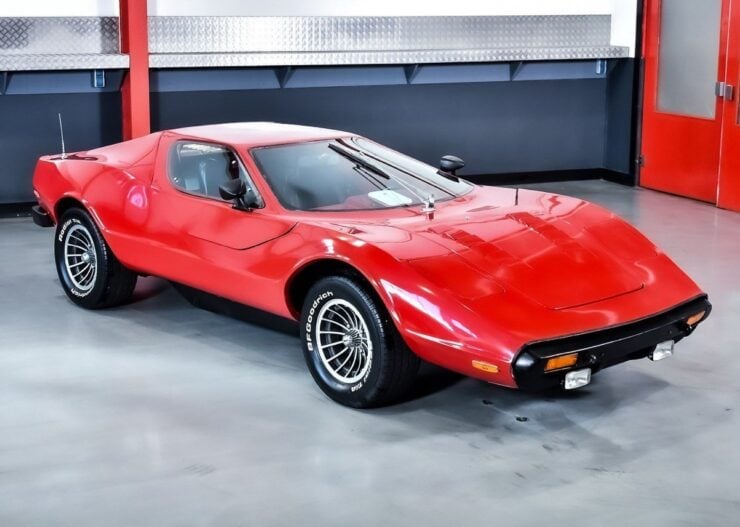


The car is powered by a humble 1.3 liter VW Beetle flat-four sending power to the rear wheels via a 4-speed manual transaxle. The new owner may decide to rectify this situation and drop in a larger displacement aftermarket Beetle crate engine for more power, like the 2.3 liter unit from JCS.
This Sterling Sebring is now being offered for sale on Car & Classic out of the Netherlands with both USA Title and Dutch import documentation, and all duties and VAT have been paid. If you’d like to read more or place a bid you can visit the listing here.
Images courtesy of Car & Classic


